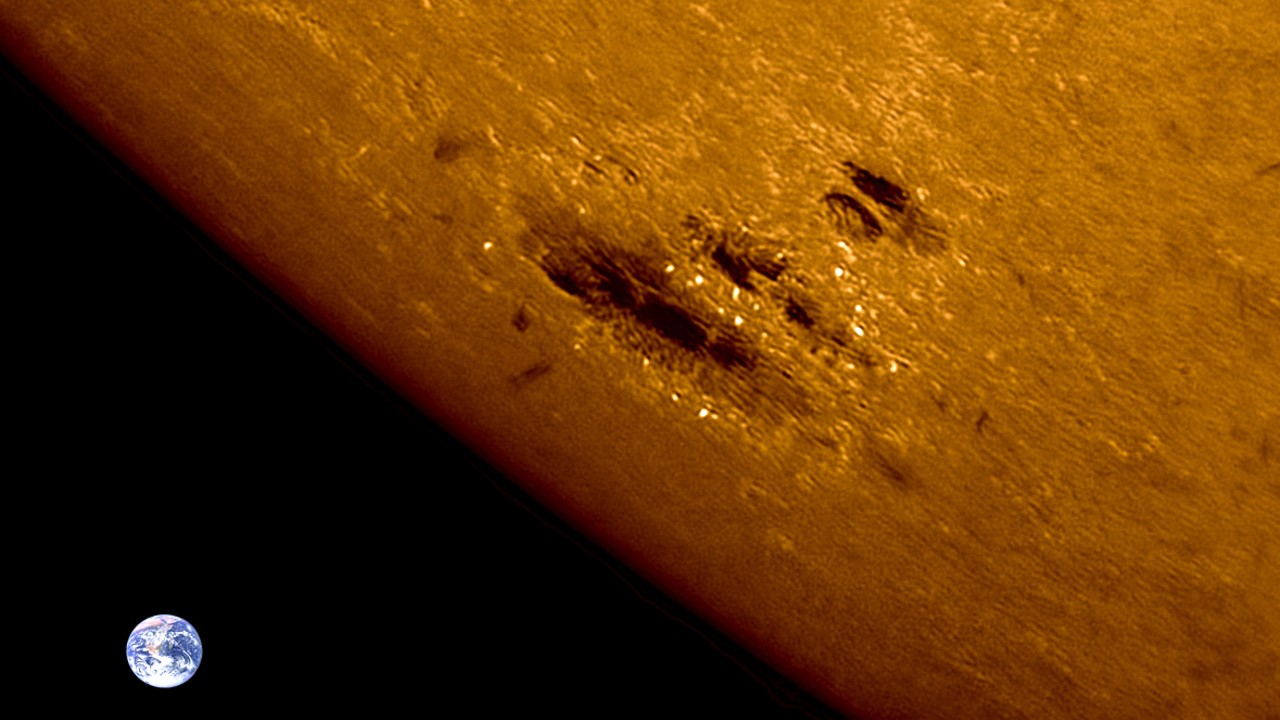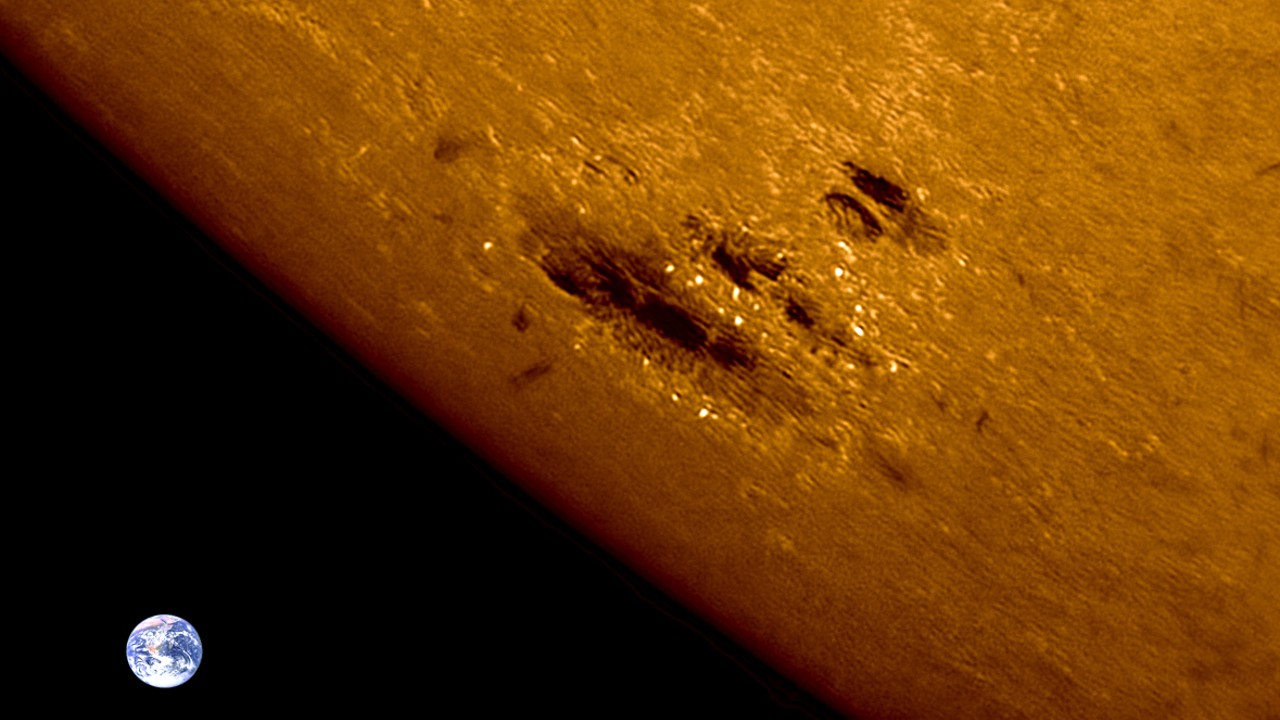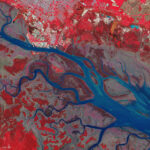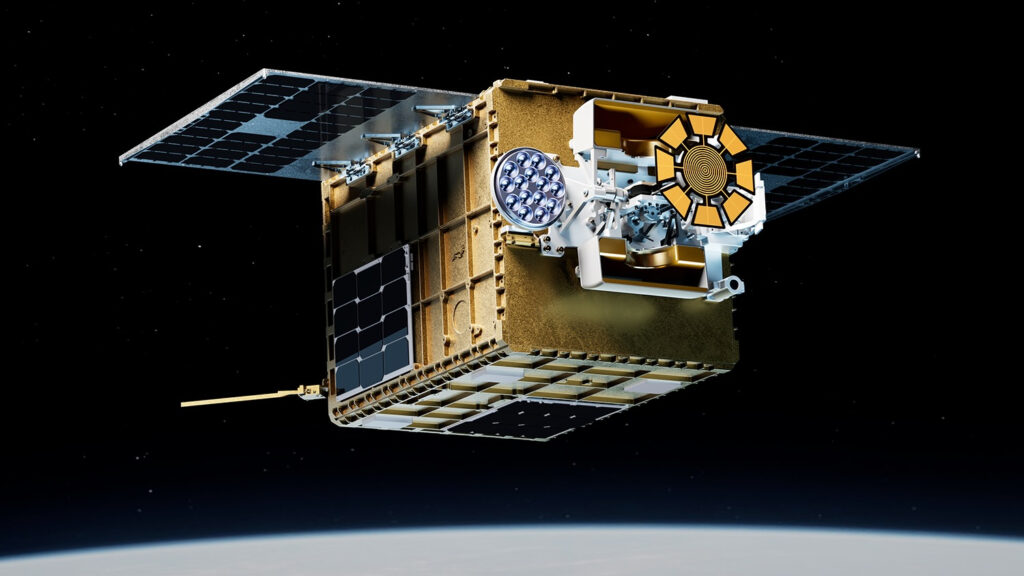Now Reading: Sunspot crackling with magnetic ‘bombs’ is now turning toward Earth (photo)
-
01
Sunspot crackling with magnetic ‘bombs’ is now turning toward Earth (photo)
Sunspot crackling with magnetic ‘bombs’ is now turning toward Earth (photo)


A new sunspot emerging over the eastern limb of the sun is putting on an explosive show and it’s heading our way.
Sunspot region 4136 was recently captured crackling with dozens of magnetic explosions known as Ellerman bombs. French astrophotographer Philippe Tosi photographed the activity on July 10 from Nîmes, France, using an H-alpha filter to capture the fine-scale action in exquisite detail. The image shows Ellerman bombs popping like fireworks near a sunspot that has already hurled out multiple M-class solar flares — mid-level eruptions on the solar flare scale — as it appeared over the eastern limb of the sun, according to spaceweather.com.
“This is not the first time I have observed Ellerman’s bombs,” Tosi told Space.com in an email translated from French using Google translate. “The conditions were difficult because it is currently very hot in the south of France — around 38°C [100 degrees Fahrenheit].”
Ellerman bombs were first described in the early 20th Century by physicist Ferdinand Ellerman. These events occur in the lower solar atmosphere and are driven by magnetic reconnection, a process on the sun in which oppositely charged magnetic fields meet and explosively reconfigure.
Each Ellerman bomb releases around 10²⁶ ergs of energy — roughly equivalent to 100,000 World War II-era atomic bombs, according to spaceweather.com. While that’s only about one-millionth the energy of a large solar flare, these mini-explosions are seen as indicators of magnetic complexity in a sunspot. When opposite magnetic polarities collide and reconnect, they release energy in quick, bright flashes.

That complexity could mean bigger fireworks ahead. With the sunspot now rotating to face Earth, it could pose a threat for stronger space weather events in the coming days. M-class flares, like those already seen, can cause brief radio blackouts and minor satellite disruptions when aimed directly at our planet.
Scientists and skywatchers alike will be keeping a close eye on this sunspot region as it rotates into an Earth-facing position in the coming days.
Stay Informed With the Latest & Most Important News
Previous Post
Next Post
-
 01From Polymerization-Enabled Folding and Assembly to Chemical Evolution: Key Processes for Emergence of Functional Polymers in the Origin of Life
01From Polymerization-Enabled Folding and Assembly to Chemical Evolution: Key Processes for Emergence of Functional Polymers in the Origin of Life -
 02Two Black Holes Observed Circling Each Other for the First Time
02Two Black Holes Observed Circling Each Other for the First Time -
 03How New NASA, India Earth Satellite NISAR Will See Earth
03How New NASA, India Earth Satellite NISAR Will See Earth -
 04Thermodynamic Constraints On The Citric Acid Cycle And Related Reactions In Ocean World Interiors
04Thermodynamic Constraints On The Citric Acid Cycle And Related Reactions In Ocean World Interiors -
 05Φsat-2 begins science phase for AI Earth images
05Φsat-2 begins science phase for AI Earth images -
 06Hurricane forecasters are losing 3 key satellites ahead of peak storm season − a meteorologist explains why it matters
06Hurricane forecasters are losing 3 key satellites ahead of peak storm season − a meteorologist explains why it matters -
 07Binary star systems are complex astronomical objects − a new AI approach could pin down their properties quickly
07Binary star systems are complex astronomical objects − a new AI approach could pin down their properties quickly




















